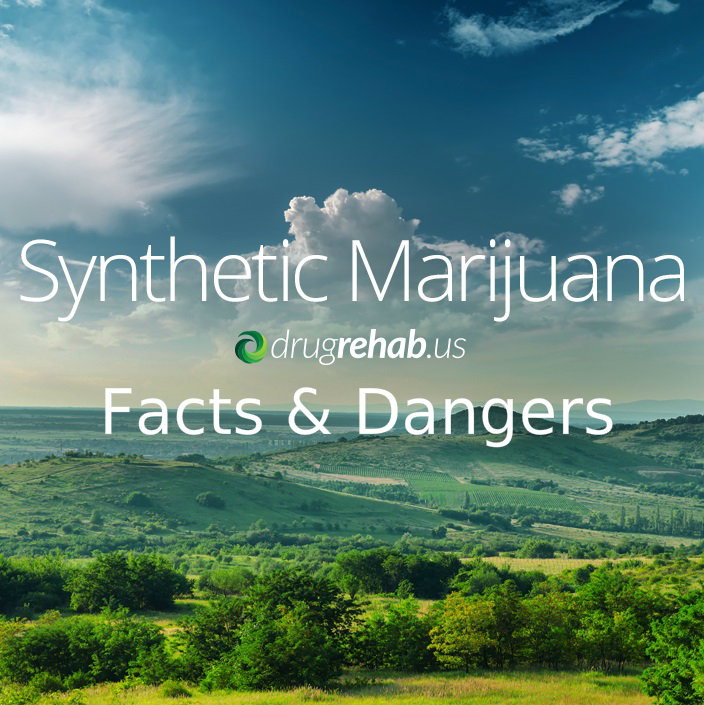Black Wednesday is the night before Thanksgiving and it is also known as the biggest bar night of the year. More than any other day during the winter holidays, this is the night during which many people cut loose and binge drink. The night before Thanksgiving is a night for the young, and it is young people who are most at risk for the consequences of overindulgence.
College students and 20-somethings are coming home for Thanksgiving, and while Thursday is for family, they use Wednesday night as a sort of reunion. Old friends get together to pack the bars and celebrate. If you are planning in taking part in a Black Wednesday event, plan ahead with a strategy of moderate drinking. Going overboard and binge drinking puts you at risk for a number of dangers, including injuries, alcohol poisoning, sexually transmitted diseases and assault.
Tips To Enjoy Black Wednesday Responsibly
Here are some ideas and tips to help you be responsible and to enjoy the night with friends:
 Skip the pre-party/pre-gaming – If you are over 35 and reading this, you may be confused. What’s a pre-party? Yes, young people actually take time to drink before a drinking event. The pre-party is a small gathering, usually at one person’s home, to get lightly buzzed before the main event. This is irresponsible drinking at its worst. Don’t do it. By all means get together with a few close friends ahead of bar time, but have coffee, soda, or mocktails instead of alcohol.
Skip the pre-party/pre-gaming – If you are over 35 and reading this, you may be confused. What’s a pre-party? Yes, young people actually take time to drink before a drinking event. The pre-party is a small gathering, usually at one person’s home, to get lightly buzzed before the main event. This is irresponsible drinking at its worst. Don’t do it. By all means get together with a few close friends ahead of bar time, but have coffee, soda, or mocktails instead of alcohol.
- Eat – Of course you want to look your best for a reunion with old friends, but starving yourself ahead of time is not the way to do it. You need to have food in your stomach or one drink could wipe you out for the night.
- Have a way to get home – To be safe, make sure you know well in advance how you’ll get home. Select a designated driver or plan to take a cab or public transportation home. If you’re going with the latter, make sure you have a friend to come home with you so that you’re not traveling alone.
- Set a limit – Set a limit for how many drinks you will have at the bar or party and be firm about it. A specific goal is important because if you go into the event with the vague goal of not getting too drunk, it will be too easy to go past the point of no return.
- Share your limit – Tell a trusted friend who will be heading out with you that you have a limit and that you want her to help keep you accountable. If your goal is a secret, it’s easy to stretch it further. A friend will help keep you in check. Offer to do the same for her.
- Alternate alcohol with non-alcohol – Whatever your set limit is, have a non-alcoholic drink in between each alcoholic one. This will force you to slow down and prevent you from getting too drunk. Once you have reached your limit, keep a non-alcoholic drink in your hand for the rest of the night. It will help you resist the urge to get another drink.
Always Plan Your Night Of Drinking In Advance
Drinking the night before Thanksgiving can be a fun way to celebrate and catch up with old friends, but it can easily get out of control. If you have a plan set in advance and follow these tips, you can enjoy the night, be safe and have no regrets the next morning.
Planning Ahead Of Time Can Save Your Night…And You Or Your Friend’s Life
27 Oct 2014
Synthetic Marijuana Facts And Dangers
Of all the arguments against decriminalizing cannabis and the rise in popularity of e-cigarettes, the one that many have failed to discuss is the possibility of increased access to synthetic marijuana. This lab-produced cannabis has been popular with young people for many years. Although law enforcement has cracked down on synthetic products and lawmakers have tried to outlaw them, synthetic marijuana is making a comeback. Everyone, especially parents of teens and pre-teens, need to know about this drug and how dangerous it is.
What Is Synthetic Marijuana?
Synthetic marijuana, or synthetic cannabis, is a product made in a lab. It is not natural, but it is supposed to mimic the natural cannabis plant. Cannabis contains thousands of compounds, called cannabinoids, which produce the mind-altering effects people seek when smoking pot. There are many ways in which these compounds can be mimicked with lab-made compounds. Many of the fake compounds have been ruled illegal, but the manufacturers can still come up with more options, keeping their products technically legal.
Synthetic Marijuana Dangers
One of the main reasons these synthetic products are so dangerous is because the user never knows exactly what he is getting. Because the product changes so much, it is impossible to know what is in it. In addition to the cannabis-like compounds, there may be any number of other chemicals, and even herbs used to look like dried marijuana. Users have been made very ill from using synthetic products, while some have become addicted and some have even died.
Side Effects Of Synthetic Marijuana
The side effects of synthetic marijuana vary because of the unknown composition of the products, and they can range from mild to severe to fatal. Some of these side effects include:
- agitation
- severe anxiety
- paranoia
- vomiting
- nausea
- high blood pressure
- rapid heart rate
- muscle spasms
- tremors
- seizures
- hallucinations
- psychosis
- suicidal thoughts
- heart attack
- death
Synthetic cannabis has also been seen to cause withdrawal symptoms in frequent users and it can become addictive.
While the use of synthetic marijuana products has dropped overall as laws changed to try to outlaw them, they are making a comeback. One reason may be the rise in popularity of e-cigarettes. These are electronic devices that allow users to “vape” rather than smoke nicotine. They were designed to help smokers quit, but are increasingly being abused. E-cigarettes use vials of liquid with dissolved nicotine. Users exhale only water vapor. Those abusing them are using synthetic cannabinoids in the vials instead of nicotine in order to get a high. The scary thing is that the exhalation doesn’t smell like anything. The user can get high anywhere without anyone realizing it.
Latest Concern Of Synthetic Marijuana
Synthetic marijuana for e-cigarettes is just the latest concern when it comes to synthetic cannabis products. These products have been around for at least a decade and while their popularity was waning, teens are getting back into using them. Synthetic marijuana is no safer than it has ever been and both parents and teens need to be aware of the risks.
If You Are Concerned With Your Teen’s Substance Abuse, Call Us Now – We Are Here For You Anytime, Day Or Night
Asking for help is never easy. It means admitting something you’d rather not and that you need other people. When you need help for addiction you may also feel ashamed or guilty. Perhaps most difficult is asking for help from the loved ones who have suffered because of your addiction. Asking for help is crucial because no one can overcome addiction alone. Be brave and talk to the loved ones you hurt. You may be surprised to find they still support you, no matter what.
How Do I Get Past the Shame Of Addiction?
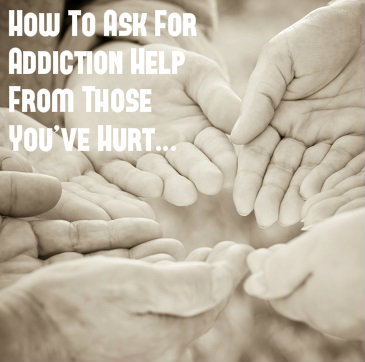 Shame is a terrible symptom of substance abuse and addiction and a common roadblock to asking for help. Understand that it is normal to feel this way. The natural response to the shame that accompanies addiction is to bury it and to deny having a problem, but this won’t help you in the long run. Shame means realizing that you are imperfect and once you accept that fact, asking for help becomes easier. No one is perfect and knowing this fact can help you connect with your loved ones who will most likely be ready to support you, even though you hurt them in the past.
Shame is a terrible symptom of substance abuse and addiction and a common roadblock to asking for help. Understand that it is normal to feel this way. The natural response to the shame that accompanies addiction is to bury it and to deny having a problem, but this won’t help you in the long run. Shame means realizing that you are imperfect and once you accept that fact, asking for help becomes easier. No one is perfect and knowing this fact can help you connect with your loved ones who will most likely be ready to support you, even though you hurt them in the past.
Learning more about your addiction can also help you to let go of shame. Read up on addiction and the latest research findings and you will see that it is a disease. Being addicted started with a choice you made, but it persists because it is a true illness that affects you physically and psychologically.
How Do I Get Past The Fear Of Rejection?
Another major roadblock to asking your loved ones for help is the fear that they will turn their backs on you. Why shouldn’t they? After all, you have broken their trust, let them down and maybe you even hurt them emotionally or physically because of your addiction. You probably see yourself now as unworthy of their love and help.
You have to see yourself as worthy of your loved ones’ time and attention. If you can’t see that, you may never ask for the help you desperately need. Think back to a time before your addiction. Remember the kind of person you were and the relationships you had with your family. Maybe you and your sister were best friends. You can probably remember a time when you were a help to your parents, rather than a burden. When you can remember the positives in the past, you can imagine a future in which you are sober again. Your loved ones will remember the old you too and will not likely reject your request for help.
How Do I Ask For Help?
Once you have recognized, acknowledged and gotten past your shame and fear, it’s time to take action. First, pick the person you think is most likely to be ready and willing to support you as you seek recovery from your addiction. For most people this means turning to a close family member, like a parent or a sibling. You know your family and friends best, so choose the person or people you think will help you in spite of all you have done to hurt them.
It never hurts to practice, so plan what you want to say. You might want to start with apologies, but be sure to stick with the main message, which is that you are ready to get help. Acknowledge out loud to your loved ones that you hurt them. They will appreciate that you are not ignoring your past wrongs. Also find a time that is conducive to a long talk. Don’t stop your loved ones on their way out the door. Take the time to find your voice and the courage you need to speak up. You may be pleasantly surprised to find that your loved ones are still there for you.
Read Our Other Inspirational Addiction Posts – Healing From Addiction Can Be Yours Today!
13 Mar 2014
Pregnant And Addicted – What Now?
Battling addiction and striving to achieve sobriety are some of the most difficult challenges a person can face. Addicts have to suffer through terrible withdrawal symptoms while detoxing, go through therapy and rehab and then face a lifelong struggle with the prospect of a relapse. Now imagine facing this demon while pregnant; it is the struggle that too many women encounter. Along with the difficulty of coming clean, they face the shame and embarrassment, the possibility of losing their children and unique health challenges. Getting sober is essential for the health of the mother and the baby.
What Are The Barriers To Treatment For Expecting Mothers?
 For many women who find themselves both addicted to drugs and unexpectedly pregnant, the idea of getting help is a daunting one. Women in this position tend to feel extreme guilt, shame and fear. A pregnant woman needing addiction treatment may avoid getting help for fear of being judged and vilified. She may also face the fear of losing her newborn after admitting to being an addict.
For many women who find themselves both addicted to drugs and unexpectedly pregnant, the idea of getting help is a daunting one. Women in this position tend to feel extreme guilt, shame and fear. A pregnant woman needing addiction treatment may avoid getting help for fear of being judged and vilified. She may also face the fear of losing her newborn after admitting to being an addict.
What addicted pregnant women need is compassionate care from doctors and other health professionals who understand the special needs of these patients. Without care, these women and their children will suffer. For instance, some women may try to take the matter into their own hands and quit cold turkey, which can actually be harmful to the baby.
The Consequences Of Addiction On The Fetus
For the unborn child, the consequences of a mother’s addiction can be serious. The baby will most likely be born with neonatal abstinence syndrome. This is a collection of symptoms caused by the drugs the mother uses. The baby is born addicted and then experiences withdrawal. Symptoms may include blotchy skin, poor feeding habits, irritability, diarrhea, high-pitched crying, seizures, insomnia, slow weight gain, fever, sweating, trembling and vomiting. Withdrawal in the baby is not the only concern; drug use can lead to complications during labor and delivery.
Pregnant Addicts On The Rise – Finding Solutions
As the number of people in the U.S. addicted to opioids (prescription painkillers and heroin) rises, the number of mothers and infants affected also rises. Statistics indicate that the number of babies born with neonatal abstinence syndrome has more than doubled in the last six years. In 2012, nearly 6 percent of pregnant women were using illegal drugs. The increases are being seen across the country and among all demographic groups. The healthcare costs are rising with the number of addicted babies.
Healthcare professionals are stepping up and looking for solutions to treating these women and their babies. With compassion and tested methods for treatment, they can help women feel comfortable asking for help with addiction. More hospitals and addiction centers are offering specialized care for pregnant women as the problem grows. Although many experts in the past have considered use of maintenance drugs, like methadone, to be bad for the unborn child, doctors now know that maintenance is often the best option. Withdrawal in the pregnant mother can be very dangerous for the baby.
Many of these new programs include not just cutting-edge treatment for addiction in the mother, but also the goal of continuing that care after the baby is born to ensure the mother has the best chance of staying sober and caring for her children. The programs also include plans for reducing complications during delivery and maximizing the odds of having a healthy baby. Many plans also help these new mothers with family planning and parenting skills, as well as long-term care for themselves and their children. With good care that is specialized for their needs, pregnant women have hope for a successful birth and healthy child.
Read More About Drinking During Pregnancy And Find Out Why Women Continue To Drink
If you’re contemplating addiction treatment, it’s probably not something you’re looking forward to. In fact, it wouldn’t be unusual if you’re completely dreading it and wish you somehow could avoid it altogether. But you can’t (for whatever reason) or you choose not to. So, it makes sense to do everything in your power to ensure that rehab is a one-time event and not end up having to repeat it down the road, right?
Of course, that’s much easier said than done. The road to recovery is replete with potential obstacles, some of which can be pretty daunting or so subtle that you don’t recognize them until it’s too late. Fortunately, though, the more aware and proactive you are throughout the process (i.e. before, during, and after rehab), the greater your chances of a successful, lasting recovery. Following are several ways to prepare for and avoid many of the most likely obstacles.
Prior To Rehab
Overcome the cost issue. There’s no doubt about it; addiction treatment often comes with a high price tag. Those daunting dollar signs can make you, like many who struggle with an addiction, feel that the treatment you need – and deserve – is simply out of reach. But before you throw your hands up in despair and reach for another drink (or hit), know that 1) you’re not alone, and 2) there are very likely options you haven’t yet realized.
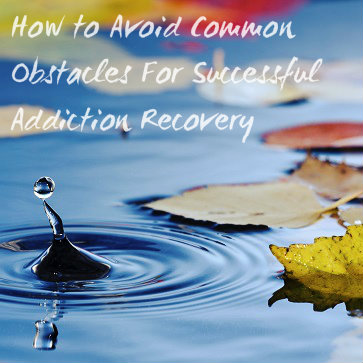 The first thing to do is check with your health insurance company (if you have health coverage) to find out exactly what they will cover. Many plans do cover addiction treatment to varying degrees. If you don’t have insurance, or if the coverage is very limited, then consider financing the program. Remember, this is a serious investment in your future, so don’t rule out financing it if needed.
The first thing to do is check with your health insurance company (if you have health coverage) to find out exactly what they will cover. Many plans do cover addiction treatment to varying degrees. If you don’t have insurance, or if the coverage is very limited, then consider financing the program. Remember, this is a serious investment in your future, so don’t rule out financing it if needed.
Many treatment facilities will allow you to set up a payment plan. Some offer financial assistance as well. Talk to the admissions department of the program or programs you’re considering to determine all the options available to you. You may find that the cost isn’t as prohibitive as it initially appeared, and that doors can open that you never expected. Don’t let the cost obstacle defeat you right out of the gate before you’ve looked into every possible option.
Another way to think of it: the cost of not getting treatment will almost certainly far exceed the cost of the most expensive treatment program in the long run – and often many times over. Many of those seeking treatment find that the old saying really does hold true: where there’s a will there’s a way. Have faith that a door will open if you knock on enough of them.
Avoid the wrong treatment program (for you) by being selective. Glossy brochures and fancy marketing tactics don’t necessarily mean a treatment center is good at what they do – or that it’s the right one for you. Do your research; check out the facility’s history, including staff credentials, licensure, etc. If possible, talk to anyone who’s received treatment there or who may be familiar with the program. Look for programs that are well-established, have a good reputation, and offer a comprehensive, holistic approach. Also, look for programs that offer good aftercare (more on that later).
It’s also important to make sure the program you choose offers treatment that’s based on research, rather than some “alternative” or trendy approach that may be lacking in substance even though it sounds really good on the surface. Extensive research has been done in the area of addiction treatment, and programs that base their treatment on scientific evidence are much more likely to be beneficial. Check to see if the program is properly accredited, which is a good indicator it’s approach is solid.
Make sure the program is a good fit for you. Some treatment centers have a specific philosophy (e.g. one that’s “based on Biblical principles”) or cater to a specific demographic (e.g. women only). You may thrive in a secular program but feel very uncomfortable in a faith-based rehab center – or vice versa.
You’ll be much more likely to succeed in rehab (and beyond) if you choose a program that fits you well the first time around. If you’re not sure, contact a few treatment centers and ask a lot of questions about their philosophy and approach. Keep in mind, though, that while none may feel like a “perfect fit”, one or two should feel like a better fit than others.
Along these same lines, it’s important to find a program that can accommodate any special needs you may have. For example, if you’re the sole custodian of your children, it would be a good idea to find a program that offers housing or other child care options for them while you’re in treatment.
During Rehab
Actively participate. Recovery isn’t something that passively happens to you – it’s something you actively work to achieve. You can go into addiction treatment kicking and screaming, sullenly determined to refuse to participate – and leave wondering why it seemed like a complete waste of time. Or, you can make the decision from the outset to actively participate and try to get as much out of your time there as you can.
Will it be fun? Probably not. Will it be worthwhile? That’s largely up to you.
Many addicts have a victim mentality, blaming everyone but themselves for their problems. Maybe your father was physically abusive while you were growing up, or your mother is an unbearable narcissist who finds nothing but fault with you. But while those experiences no doubt significantly impacted your life, they don’t have to define you. Now is the time to decide that your future is up to you and the choices you make from this day forward. The more you strive to get out of rehab this time, the less likely there will be a next time.
After Rehab
Regard your recovery as a long-term process. Successful recovery isn’t akin to a 100-yard dash. Rather, it’s much more like a marathon. Rehab may be a short-term, time-limited event, but it doesn’t end there. Yes, you did a lot of hard work while you were there – and it’s important to acknowledge that. But you didn’t walk out the door “cured” of your addiction. That’s why it’s imperative to continue using the things you learned in rehab if you’re serious about staying clean and sober.
Don’t let that discourage you. Remember, the most worthwhile things in life rarely (if ever) come quickly and easily. They take effort, tenacity, and determination.
Make sure you get proper aftercare. One of the most crucial aspects of successful recovery – and thwarting an early relapse – is proper aftercare. As mentioned above, recovery didn’t end when you left rehab. That would be nice, but it’s not reality. Many addiction treatment facilities offer ongoing aftercare to help ensure your success. However, if your rehab treatment occurs far away from home, it’s important to make sure a good aftercare plan is in place when you return home.
An aftercare program typically includes ongoing counseling and support. Support may come in the form of support groups (that you attend on a regular basis) as well as helping you establish a solid support network. Aftercare is crucial to your recovery because, without it, you are much more likely to relapse. It helps bolster you during times of temptation while keeping you accountable. Those who have a strong aftercare program are much less vulnerable to slipping back into their old habits – the very habits that contributed to their addiction.
Surround yourself with supportive people. You’ll encounter three types of people before, during, and after rehab: those who truly want you to succeed, those who want to undermine you, and those who don’t care one way or the other. The more you’re able to surround yourself with individuals in the first category, the greater your chances of staying on track with your recovery.
Sometimes supportive individuals (outside of those involved in your aftercare) are hard to find, especially if you don’t have supportive family or friends, have moved to a new city, or severely alienated everyone prior to rehab. But it’s not impossible with some effort. Twelve-step programs and other types of support groups are available in most areas. Online groups are also available, although they shouldn’t the replace face-to-face interactions that occur in support groups that you physically attend.
You can also find supportive individuals in a variety of contexts, such as a church community or an exercise-based program – any type of group in which people are more likely to endorse a healthy lifestyle and be supportive of fellow members. Talk to your aftercare counselor about ways to bolster your support network, as well as how to avoid situations and settings that may not be in your best interest.
Above all else, believe in yourself. You can either be your greatest cheerleader or your worst enemy. Ultimately, that choice is up to you. As someone in recovery, you may still be haunted at times by past pejorative labels. People may have been very cruel in the harsh words and judgments they directed towards you. And those can be hard to forget. But having an addiction doesn’t make you any less worthy than anyone else. Not to mention, choosing to get help, do the hard work, and continuing to work on your recover shows that you are resilient and courageous – two traits that should make you proud.
The recovery journey is anything but easy – anyone who says otherwise has never walked that path. The obstacles along the way can be overcome. Take it one step and one day at a time. Believe in yourself and you can and will succeed.
Check Out If Your Insurance Will Cover Your Rehab
03 Feb 2014
How To Have The Marijuana Talk With Your Child
Marijuana is in the news a lot these days. Nearly half of all states have legalized medical marijuana. Two states now allow for recreational use of the drug. And yet, this substance is still illegal across the country according to federal law. There are many contradictions and confusions related to cannabis. Is it safe to use? Can it really help treat illnesses? When your child starts asking these questions, be sure you have the right answers. And consider having a talk about this controversial subject before your child gets the wrong answers at school.
Is Marijuana Safe?
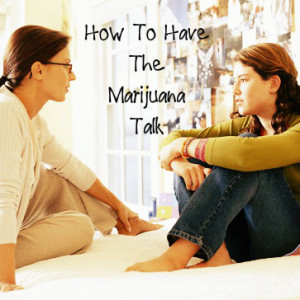 Attitudes regarding marijuana have shifted considerably in this country. As legalization for marijuana has occurred, many people have begun to assume that the drug must be safe. If it is considered a medicine, and is prescribed by doctors, it must be safe to use is a common misconception that you should correct for your child.
Attitudes regarding marijuana have shifted considerably in this country. As legalization for marijuana has occurred, many people have begun to assume that the drug must be safe. If it is considered a medicine, and is prescribed by doctors, it must be safe to use is a common misconception that you should correct for your child.
Marijuana is safer than many other drugs, but emphasize to your child that there are risks associated with using it. Smoking marijuana leads to impaired thinking and coordination, memory problems, and distorted perceptions in the short term. It can also cause paranoia, depression and anxiety. Using marijuana also increases the risk of having a heart attack and of developing a respiratory problem.
What Is Medical Marijuana?
Medical marijuana is no different from the drug that people use recreationally. It is simply marijuana that is prescribed by doctors to patients. Medical marijuana is most often smoked, but can also be consumed. Marijuana can be used to ease the symptoms of chemotherapy for cancer patients and those that are struggling with HIV and AIDS. It also helps people with the eye disease glaucoma and with multiple sclerosis. Chronic pain caused by any condition can be relieved by marijuana use.
Is Marijuana Addictive?
Another misconception that your child may have about this drug is that it is not addictive. The truth is that it does have the potential to lead to dependence, although the risk is much less than other substances, like cocaine, heroin, and even tobacco and alcohol. Make sure your child understands that addiction is always a risk when using a mind-altering substance.
Can You Get In Trouble For Using Marijuana?
Be sure that your child understands very clearly that even in states where marijuana has been decriminalized to any extent that it is illegal everywhere for anyone under the age of 21 to use marijuana. The exception to this rule is if a young person has a medical need for the drug. Just because marijuana is becoming legal in some places does not mean that teenagers can use the drug without consequences.
Isn’t Everyone Smoking Marijuana?…Maybe Not
The prevalence of marijuana in public discussion may make your child feel as if everyone is using this drug. It is important for your child to understand that this is not true. The vast majority of people, adults and teens, choose not to use marijuana. Among teenagers, fewer than eight percent report using the drug in the past month. Among people of all ages, this number drops to seven percent. The perception that everyone is doing something is powerful, so emphasize to your child that this is not the case with marijuana.
Provide The Answers About Marijuana Before Your Child Asks
Talking to your child about drugs is important and could be life-saving. With marijuana in the public consciousness and with perceived risk so low among young people, it is crucial that you have the answers your child needs to hear. Don’t wait for him to ask you. Start the conversation now and be sure that your child hears about this drug from you and not from his peers.
Read More About Why You Should Believe That Marijuana Is Dangerous
We all have those voices in our heads—the critic, the tempter, the downer, the voices telling us we’ve never been anything and we shouldn’t even try. But in order to want sobriety and progress in recovery, we need to learn to silence the voices of opposition. But how do you get past the voices in your head that keep you in dysfunctional and destructive patterns?
Identify The Negative Voices
 It helps to begin by identifying the messages flying around in your head. Whose voice is the one that you hear most strongly and loudly in your mind? Who is the one, though you are an adult, who is still criticizing you and tearing you down and insisting you conform to his or her way of life, dysfunctional as it may be? Listen to what you hear when you think you need to take a drink or get high. Who or what is controlling you without your permission?
It helps to begin by identifying the messages flying around in your head. Whose voice is the one that you hear most strongly and loudly in your mind? Who is the one, though you are an adult, who is still criticizing you and tearing you down and insisting you conform to his or her way of life, dysfunctional as it may be? Listen to what you hear when you think you need to take a drink or get high. Who or what is controlling you without your permission?
Parents’ voices ring in our ears though they may be long dead. Through their words and actions they imposed their view of the world, relationships and love when we were in our youngest and most impressionable and vulnerable stages of life. We took that input at face value. We didn’t question if it was right or wrong or sane. And today, as adults, many of us are still living our lives guided by those dysfunctional, damaging beliefs.
Or maybe it was a harsh coach or teacher or a relentless sibling or school bully. Without realizing it we are still hearing these critical and insulting voices in our heads. We are still subconsciously dominated by the people whose opinion we may not even respect and whose approval we no longer covet. We need to begin to set ourselves free of these mental tyrants.
How To Let Go And Live For Ourselves
How do we learn to let go of others’ perceptions of the world? How do we live for ourselves rather than for the whims of some undefined them? We do it by beginning to intentionally perceive our own world. How do we think about things? What do we think we are capable of, regardless of what others have told us? What do we want out of life? What are the things we believe are most worth living for and pursuing? As an adult, you have the freedom to make your own decisions, have your own opinions and live in a way that is pleasing and healthy for you. What does that look like?
One woman, in a loving relationship with a man, was afraid to express her needs or her emotions for fear of being a burden. Her partner, however, didn’t view her emotions as anything other than valid and worthy of consideration and discussion. Still she feared being the “difficult woman” because of how her father viewed women and their needs and the way he conceptualized their motives as self-serving. But this experience was her father’s, not a universal truth about women and men.
As she grew up and desired to have a healthy and functional romantic relationship, she realized that she would need to put her father’s perceptions and prejudices about the world and relationships out of her mind in order to experience the world and her life as her own. Her father’s experience was not hers; she was not a demanding woman or self-serving. She did, however have emotions and needs that her partner was healthy enough to want to honor. She learned that not all women were self-serving or demanding and that not all men viewed them that way.
Evaluate What’s Helpful And What’s Not
As we progress through life and we see our frequent hang-ups, and the beliefs that don’t serve us, we have to begin to ask whose voice it is that we are hearing. Who is motivating the feelings of fear and apprehension we feel? Is it a parent telling you that you’ll never have what it takes? Or that you have never been good enough? Is it a competitive sibling making fun of your interests and talents? Is it a judgmental “friend” who was only trying to give you some helpful advice?
It is time to begin to evaluate that which is not helpful and then to let it go so that you may live free—free to determine your own life, free to recover and free to recognize and realize your own potential. How many of us drank or practiced our addictions because we couldn’t stand ourselves and needed an escape from our own reality? Or because we didn’t believe ourselves worthy of much better than playing out our lives as drunks and just getting by? Identifying the negative voices supporting those damaging beliefs can help us to see that we have been living a lie and are indeed worthy of so much more.
How Therapy Can Help
These life-controlling beliefs are deeply ingrained and they are hard to overcome—in many cases therapy may even be helpful in figuring out where the roots lie. Between our 12-step work and therapy, we gain the tools to uproot those old beliefs and toss them onto the compost pile. Your mind is your own; don’t give it over to the voices that only seek to tear you down. Live the victorious life that was meant for you.
Read More About Hope In Recovery
18 Nov 2013
E-Cigarettes Secretly Used To Hide Drug Use
The e-cigarette is a modern invention and an alternative to tobacco cigarettes. They were designed to allow people to smoke and to get nicotine into the bloodstream without inhaling all of the toxins found in tobacco. E-cigarettes may be helping people to quit smoking, and because they do not produce actual smoke, they may also allow people to get their nicotine without affecting the people around them.
On the surface, it seems that e-cigarettes are a great invention that can help people. Unfortunately, there are downsides to these fake cigarettes, not least of which is the fact that they can be used to smoke illegal drugs, like marijuana. Because of the way they work, someone can smoke pot using an e-cigarette without being detected.
The E-Cigarette Revolution
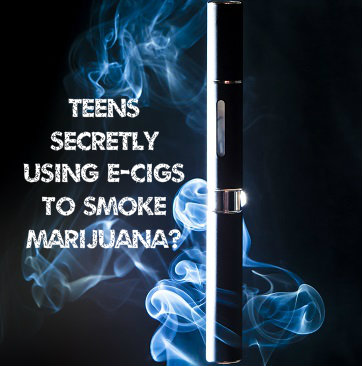 An e-cigarette is different from a traditional cigarette in that it does not use tobacco. Instead, it uses batteries and a liquid solution of nicotine. The battery heats and vaporizes the solution so that the user inhales and exhales vapors, rather than smoke. Because nicotine is the only ingredient, the user is also not inhaling all of the additives in tobacco that are so harmful, such as tar, acetone and arsenic.
An e-cigarette is different from a traditional cigarette in that it does not use tobacco. Instead, it uses batteries and a liquid solution of nicotine. The battery heats and vaporizes the solution so that the user inhales and exhales vapors, rather than smoke. Because nicotine is the only ingredient, the user is also not inhaling all of the additives in tobacco that are so harmful, such as tar, acetone and arsenic.
Although nicotine is still a drug, and one that is harmful and addictive, smoking an e-cigarette is much less dangerous than smoking tobacco cigarettes. It is also less harmful to others around the smoker because there is no secondhand smoke. Without the offensive fumes, it may be possible for people to smoke using e-cigarettes in areas that are normally restricted to smokers.
For the above reasons, e-cigarettes are set to become big sellers in the U.S. and elsewhere. Some experts are even predicting that they will start to outsell real cigarettes within a decade. E-cigarettes are already big business in Europe. The European Parliament recently rejected a proposal to regulate them as medical devices, which would have meant tight restrictions on sales.
E-Cigarettes Being Used To Smoke Marijuana
Although e-cigarettes may have been created as healthier, alternative delivery devices for nicotine and to help smokers kick the habit, clever drug users have already crafted them for different uses. The cartridge of liquid nicotine solution that goes into an e-cigarette can easily be replaced by any liquid. Any substance can be vaporized and inhaled using one of these devices.
Most commonly, abusers are using a cartridge with a liquid solution of THC, the main psychoactive substance found in marijuana. With liquid THC in an e-cigarette, a person can get high and yet appear to be legally inhaling legal, nicotine vapors. The same property of e-cigarettes that allows users to smoke without offending those around them, allows for covert use of illicit drugs. The vapors produced by the e-cigarette are odorless. A person can get high without arousing suspicions.
Teens Smoking Marijuana With No Recognizable Odor
While an adult covertly smoking pot is a concern, a bigger one is the use of marijuana by teenagers. As the presence of e-cigarettes proliferates, teens are finding that they make an excellent vehicle for smoking pot. Smoking marijuana produces a characteristic odor that clings to clothes, hair and fingers. With e-cigarettes, a teen can inhale liquid THC, get high, and never give off the usual signs. Parents who are concerned that their teens may be using marijuana will have to be more vigilant and look for other signs of intoxication.
E-Cigarettes Targeting Young People?
Another concern regarding teens and e-cigarettes is that these new devices may be targeting young people. E-cigarettes can be sold with different types of nicotine cartridges with flavors like strawberry, peach and grape. They are also sold online, which makes it easier for kids to get a hold of them. If kids start using these devices at a young age, they may be more inclined to try other substances. In other words, e-cigarettes may become the new gateway drug. The problem has already begun, as statistics indicate that the number of middle and high school students using e-cigarettes is rising.
It seems that e-cigarettes have a place in our modern world. They allow adults to use a legal substance in a way that is less harmful than cigarettes. They also help those who want to quit the habit of smoking. On the other hand, e-cigarettes pose a big problem. Until we can figure out how regulate them fairly, or how to detect illegal drugs being used in e-cigarettes, parents and other adults should be aware of the possibility that they are being abused by teens.
Read About Smoking Marijuana And The Future Effects On Teens


